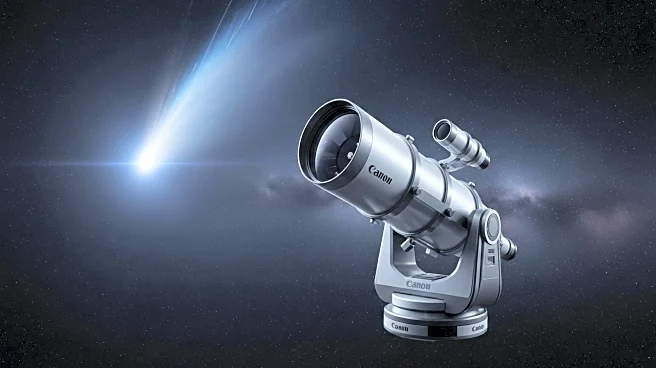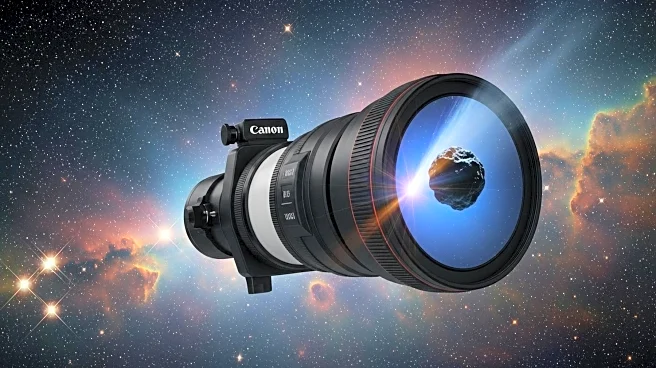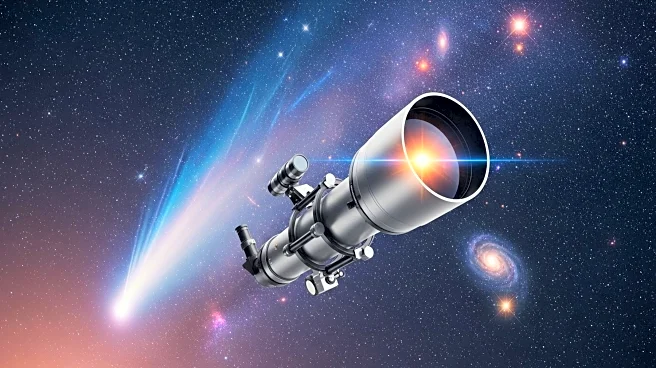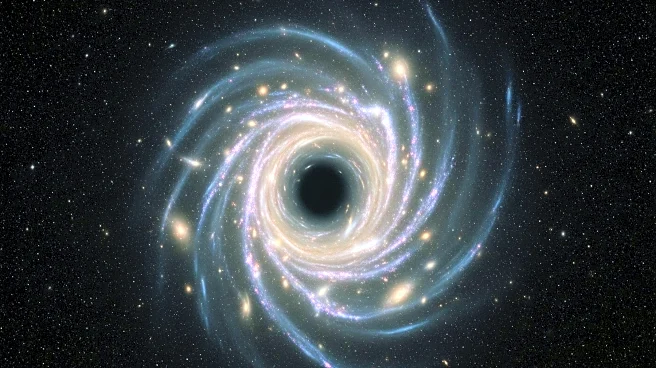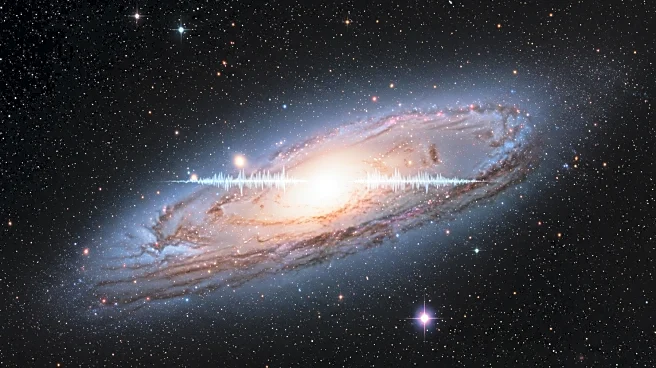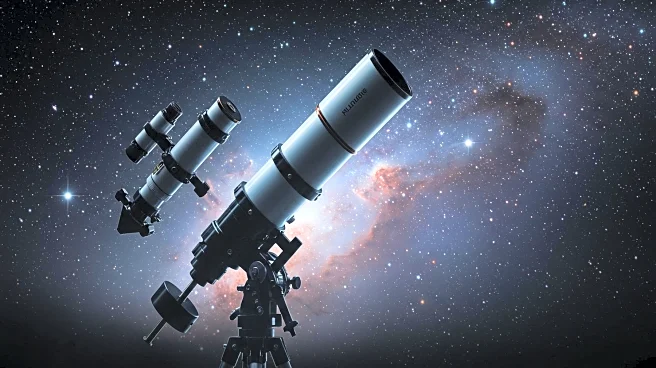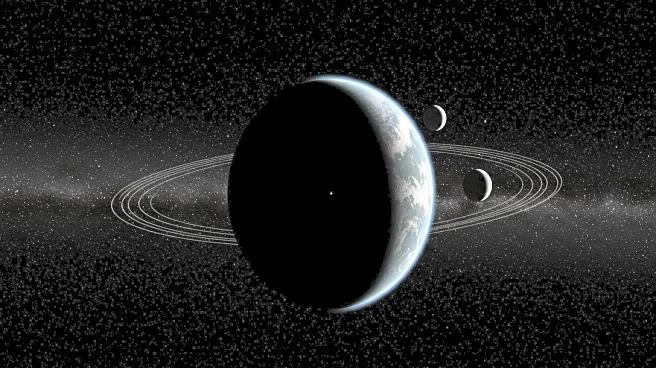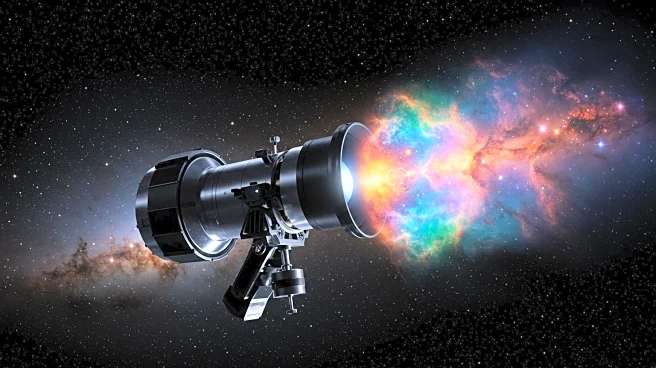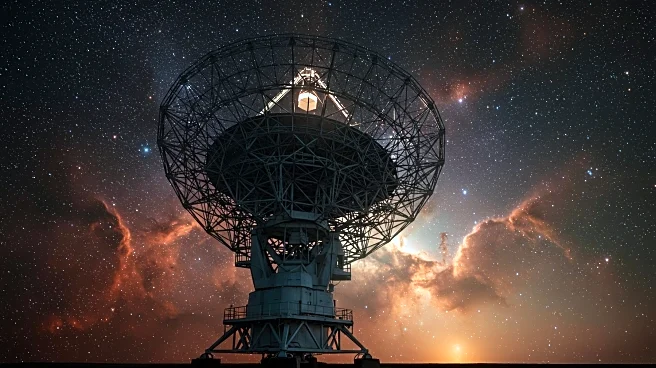What's Happening?
The James Webb Space Telescope (JWST) has conducted its first observation of the interstellar comet 3I/ATLAS, utilizing its infrared capabilities and Near-Infrared Spectrograph instrument. Discovered on July 1 by the ATLAS survey telescope, 3I/ATLAS is the third known object from outside our solar system. Previous observations by the Hubble Space Telescope and the SPHEREx Observatory have also studied this comet. The JWST's investigation aims to reveal the comet's size, physical properties, and chemical composition. Notably, the comet exhibits a high ratio of carbon dioxide to water, which is unprecedented in comet observations. This suggests that 3I/ATLAS may have formed in a region with high radiation exposure or within a specific area known as the 'carbon dioxide ice line' in its original star system.
Why It's Important?
The study of 3I/ATLAS provides valuable insights into the conditions of other star systems during their formation. By comparing these findings with data from our solar system, scientists can better understand the processes that shaped planetary bodies. The high carbon dioxide content in 3I/ATLAS could indicate unique formation conditions, offering clues about the chemical environments in distant star systems. This research contributes to the broader understanding of interstellar objects and their role in the cosmic landscape, potentially influencing future studies in astronomy and astrophysics.
What's Next?
The JWST will continue to monitor 3I/ATLAS as it travels through the solar system, aiming to uncover more details about its composition and origin. As the comet approaches the sun, further observations may reveal additional chemical transformations. The ongoing study of 3I/ATLAS will enhance our knowledge of interstellar comets and their characteristics, providing a clearer picture of their journey through space and their interactions with solar radiation.
Beyond the Headlines
The unexpected chemical composition of 3I/ATLAS raises questions about the diversity of cometary materials and their formation processes. This discovery may prompt a reevaluation of existing theories regarding comet formation and the influence of radiation on icy bodies. Additionally, the study of interstellar comets like 3I/ATLAS could lead to advancements in understanding the migration patterns of such objects and their potential impact on solar systems.
